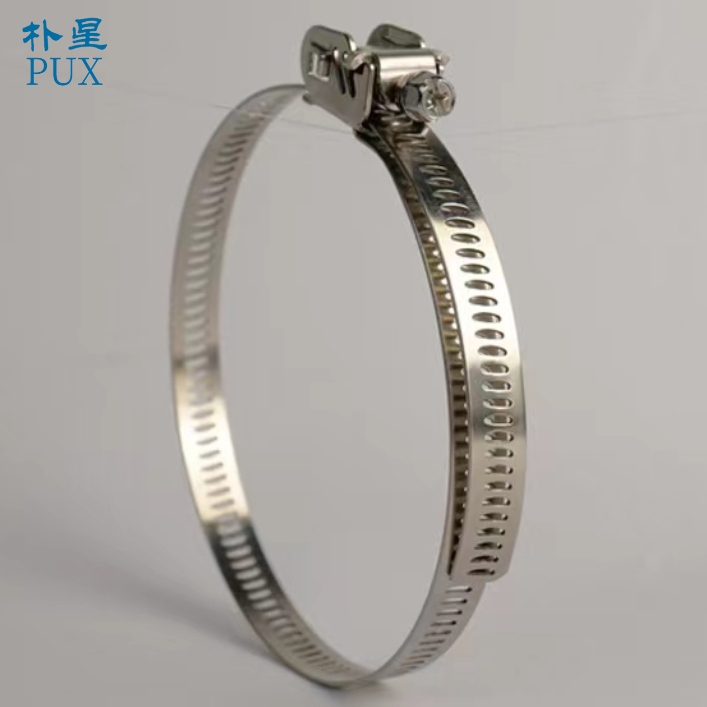- Phone:+86-17331948172 +86-0319-8862898
- E-mail: inquiry@puxingclamp.com
Nov . 19, 2024 05:17 Back to list
Quality Hose Clamps Manufactured for Reliable Performance and Durability in Various Applications
The World of Hose Clamp Manufacturing A Look into the Factory
Hose clamps are vital components in various industries, providing secure and reliable connections for hoses and pipes. From automotive applications to industrial settings, these small yet essential tools play a significant role in ensuring safety and efficiency. This article delves into the fascinating world of hose clamp manufacturing, looking at the processes, materials, and the factory environment where these products come to life.
At the core of any hose clamp factory is the commitment to quality and precision. The manufacturing process typically begins with the selection of high-quality raw materials. Commonly used materials include stainless steel, carbon steel, and plastic—each chosen based on the application requirements. Stainless steel, for instance, is highly resistant to corrosion, making it ideal for marine or outdoor applications, while plastic clamps may be favored in less demanding environments.
The World of Hose Clamp Manufacturing A Look into the Factory
After cutting, the next phase is shaping the material. Various types of hose clamps, such as worm gear clamps, spring clamps, and ear clamps, require different forming techniques. For instance, worm gear clamps are typically formed into a circular shape with a mechanism for tightening, while spring clamps are designed to close automatically when not under tension. This step is essential, as the design and shape of the clamp determine its functionality and the range of hoses it can accommodate.
t hose clamp factory

Following shaping, the clamps undergo a series of tests to ensure they meet industry standards. These tests evaluate factors such as tensile strength, corrosion resistance, and flexibility. Quality control is paramount in hose clamp manufacturing; clamps that do not meet specifications are discarded or reworked, ensuring that only the highest quality products reach the market.
Surface treatment is another critical process in manufacturing hose clamps. Depending on their intended use, clamps may receive various coatings, such as zinc plating or powder coating. These treatments enhance durability and provide further resistance to environmental factors, boosting the lifespan of the clamps in various applications.
Once the clamps are fully assembled, they are packaged and prepared for distribution. Most factories emphasize sustainable practices, utilizing eco-friendly materials for packaging and reducing waste during the manufacturing process. In addition, factories often strive for energy efficiency, implementing systems that minimize their carbon footprint.
In conclusion, the world of hose clamp manufacturing is an intricate blend of engineering, quality control, and innovative practices. The factory setting, with its high-tech machinery and skilled workforce, is a testament to the importance of these small yet mighty components in numerous applications. As industries continue to evolve, hose clamp manufacturers will undoubtedly adapt, ensuring their products remain reliable and robust in an ever-changing market. Whether it be in automotive engineering, plumbing, or industrial setups, hose clamps will continue to play a crucial role, quietly securing our connections and contributing to the efficiency of various systems worldwide.
-
Large Stainless Steel Adjustable American Type Hose Clamp - Hebei Pux Alloy Technology Co., Ltd.
NewsAug.06,2025
-
High Quality Steel Midsole - EN Standard for Safety Shoes
NewsAug.06,2025
-
Large Stainless Steel Adjustable American Type Hose Clamp - Hebei Pux Alloy Technology|[Corrosion Resistance]&[Adjustable Design]
NewsAug.06,2025
-
Large Stainless Steel Adjustable American Type Hose Clamp - Hebei Pux Alloy Technology Co., Ltd
NewsAug.05,2025
-
Large Stainless Steel Hose Clamp - Hebei Pux Alloy Technology Co., Ltd | Corrosion Resistance, Adjustable Design
NewsAug.05,2025
-
Large Stainless Steel Adjustable American Type Hose Clamp - Hebei Pux Alloy Technology Co., Ltd | Corrosion Resistance&Adjustable Design
NewsAug.05,2025




